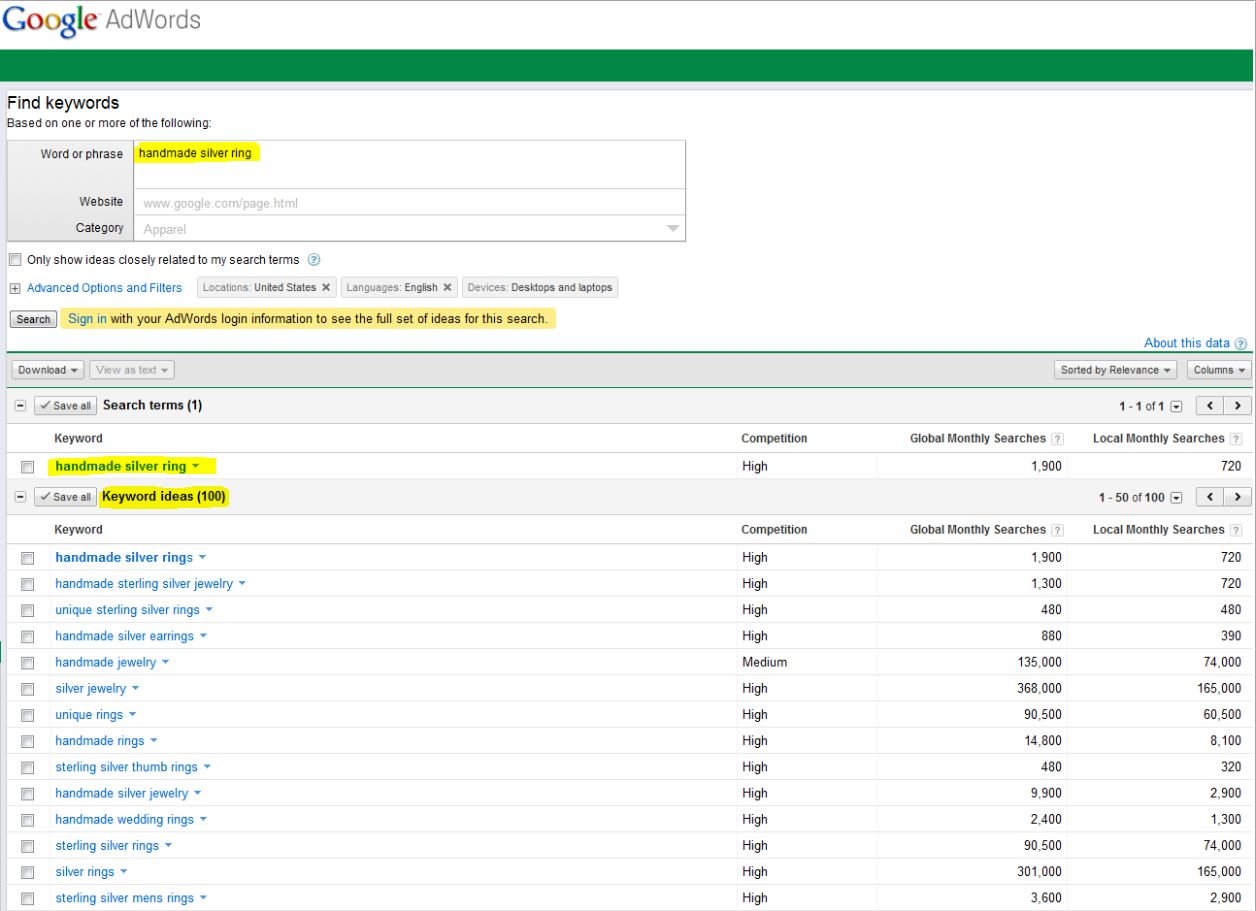Small Business
How to Write Creative, Keyword-Rich Product Descriptions (That Sell!)
{Today’s post comes from Jill Tooley, a professional content writer, and it’s a great one! Enjoy! –Stephanie}
If your products lack quality descriptions, then you’re not only limiting your sales but also hindering the way your listings are found in searches.
What do I mean by “quality”? As an experienced content developer, I’ve learned that a quality description is one that at least includes the following:….
{Today’s post comes from Jill Tooley, a professional content writer, and it’s a great one! Enjoy!}
If your products lack quality descriptions, then you’re not only limiting your sales but also hindering the way your listings are found in searches.
What do I mean by “quality”? As an experienced content developer, I’ve learned that a quality description is one that at least includes the following:
- Original content (not a stock description and not text that’s been copied from another site)
- Accurate and detailed product specifications
- A variety of relevant keywords that sound natural
That’s a quick and dirty breakdown, but it works. The goal is to produce content that’s not only original and creative, but also keyword-optimized for search engines and digestible for your customers once they’re on your website.
Here are some pointers to start writing your shiny new product descriptions!
Pro Tip #1:
Choose your product’s alternate keywords first, and then naturally work them into the copy.
Example: Let’s say you need a description for a handmade silver ring. You’ll need more keywords than “handmade silver ring” to attract visitors, because everyone searches differently. Think of alternate search terms for your handmade ring and write down any that come to mind right away – those are probably the most relevant.
If you were a customer, which terms would you use to search for a handmade silver ring? Try to sprinkle a few different major keywords throughout your description when you refer to the product you’re selling instead of repeating “handmade silver ring” or the product name.
To get a head start on keywords for your product, you can also go to the Google Keyword Tool and type your product name (or desired product name) into the box. It’ll kick back 100 popular keywords related to your original term. Pretty cool, right? That should help you brainstorm a few more usable terms! You can also see the number of times people searched for each keyword, and how much competition is associated with it:
(Click to enlarge.)
Just keep in mind that only natural, relevant keywords will help you with the SEO (search engine optimization) part of your product descriptions. If you can’t figure out how to drop a keyword into your description without forcing it, or if it wouldn’t add anything to your product, then you should skip it.
Keyword stuffing – the practice of jamming ungodly numbers of keywords into your copy – is frowned upon by search engine crawlers and won’t make much sense to the customers who actually read it.
Pro Tip #2:
Have fun with your descriptions and let your product passion shine through!
Even though I’ve read a gajillion articles about SEO and written countless product descriptions, few of those articles mention one of the most important content tips: HAVE FUN.
Don’t be afraid to make a joke, to use a pun, or to get imaginative with your content! For example, I’ve written short and keyword rich poems and want-ad style copy to describe products, and customers complimented me on them (warm fuzzies).
Passion is easily detectable in writing, and that’s why my favorite descriptions are the ones that ooze enthusiasm. This step should be easy because you’ll most likely have some interest in the products you sell.
Pro Tip #3:
Before you hit the publish button on that newly written product description, run it by this checklist:
Quality Product Description Checklist:
- Does the content make sense to humans? Read it aloud and delete or change awkward phrasing.
- Is the content optimized for search engines? Try highlighting only the keywords (name of the product, alternate descriptions, etc). If you have more than one keyword or targeted phrase per sentence, then you have too many. One in every other sentence is better.
- Is the content an appropriate length? 100 to 150 words is ideal, but longer descriptions couldn’t hurt for a bestselling product.
- Does the description match the product? Make sure the product specs are correct.
- Is the description unique (as in, original)?
- If there’s a place for keyword tags, have you included the most relevant ones?
Further Considerations
Still clueless about SEO? Never fear. You can either give yourself a crash course (I recommend SEOMoz’s Beginners Guide to SEO) or hire an experienced freelance copywriter to hammer out the quality content for you. I promise you’ll get better with time, though. Everything I learned about SEO, I learned on the job with a lot of trial and error! Original product descriptions are harder to write if you have an extensive catalog, but that’s not to say they’re impossible. My suggestion? Start with your top-selling items and work your way through the rest over time.
Don’t forget to showcase your products with a variety of creative photos, either. The product description itself can only do so much; without an image, customers aren’t going to take you seriously.
Warning: If you’re not a strong writer, then it’s best to team up with someone who is. There’s no shame in doing that, either! If my product listings called for elaborate math equations or formulas, then I’d ask for outside help in a heartbeat. We all have our strengths.
Oh, and whatever you do, don’t copy and paste content from other sites without permission. It may seem like quick and easy solution, but it may cause you more problems in the long run. Plagiarism is never the answer, and thieves aren’t known for raking in the friends. It’s not worth it!
Are you still confused about product descriptions? Do you have any more writing suggestions for e-commerce content? Which methods have brought you the most success?





 Jill Tooley manages the content and social media departments at
Jill Tooley manages the content and social media departments at 








